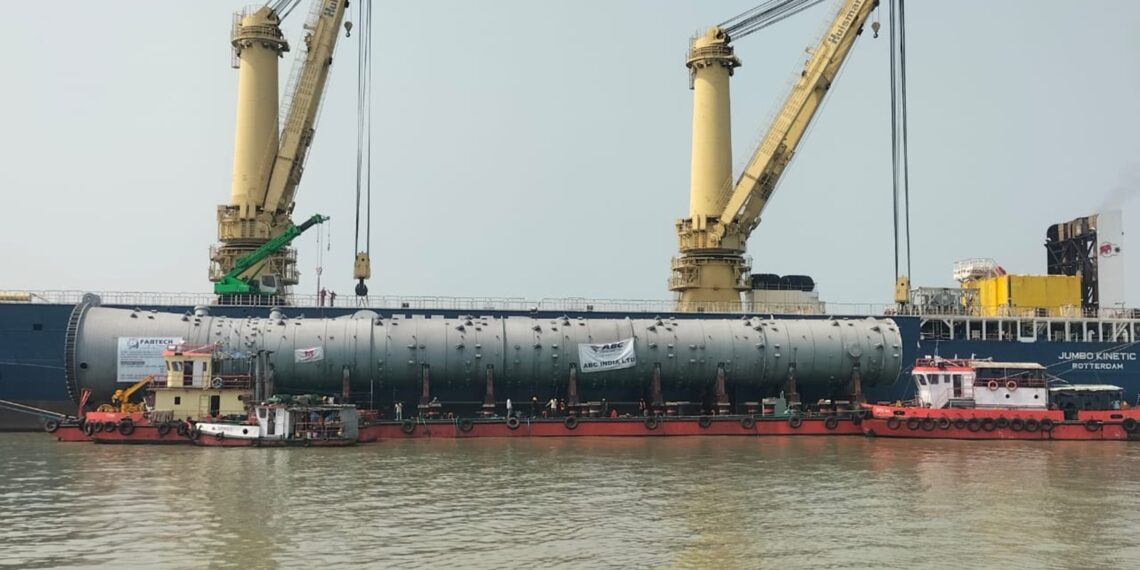By Prof Shankar Chatterjee, Hyderabad
Petroleum refining processes are the chemical engineering processes and other facilities used in petroleum refineries (also referred to as oil refineries) to transform crude oil into useful products such as liquefied petroleum gas (LPG), gasoline or petrol, kerosene, jet fuel, diesel oil, and fuel oils.
Refineries and petroleum industries are very large industrial complexes that involve many different processing units and auxiliary facilities such as utility units and storage tanks.
Each refinery has its unique arrangement and combination of refining processes largely determined by the refinery location, desired products, and economic considerations.
Before the nineteenth century, petroleum was known and utilised in various fashions in Babylon, Egypt, China, the Philippines, Rome, and along the Caspian Sea.
The modern history of the petroleum industry is said to have begun in 1846 when Abraham Gessner of Nova Scotia, Canada, devised a process to produce kerosene from coal.
Shortly thereafter, in 1854, Ignacy Lukasiewicz began producing kerosene from hand-dug oil wells near the town of Krosno, Poland.
The first large petroleum refinery was built in Ploesti, Romania, in 1856 using the abundant oil available in Romania.
Some modern petroleum refineries process as much as 800,000 to 900,000 barrels (127,000 to 143,000 cubic meters) per day of crude oil(wikipedia.org/wiki/Petroleum)
Numaligarh Refinery Limited (NRL) was established as a company on April 22, 1993, following the provisions made in the historic Assam Accord signed on August 15, 1985.
NRL is a Schedule-A- A, Category-I Miniratna CPSE under the Ministry of Petroleum and Natural Gas, Govt. of India.
The 3 MMTPA Refinery was dedicated to the nation by the late Prime Minister of India, Atal Bihari Vajpayee, on July 9, 1999.
NRL has been able to display credible performance since the commencement of commercial production in October 2000.
With its concern, commitment, and contribution to the socio-economic development of the state of Assam and North-east India, it is considered one of the glowing manifestations of successful business enterprises in the region, with its footprints across the globe where its products, especially paraffin wax, continue to be exported.
NRL has embarked on a major integrated Refinery Expansion Project to treble its capacity from three million metric tons per annum (MMTPA) to nine MMTPA at an estimated investment of more than Rs. 28,000 Crore, one of the highest in the North-east region.
The project also includes setting up a crude oil import terminal at Paradeep Port in Odisha and laying about 1640 kilometres of pipelines for the transportation of imported crude oil to Numaligarh.
NRL is also implementing a 360 kilo tonnes per annum (KTPA) polypropylene project at an estimated cost of Rs. 7,231 crore.
Aligning itself with the Government of India’s target of achieving net zero by the year 2070, NRL has carved a roadmap to attain its net zero goals by the year 2038.
Taking a step further in this direction and in line with the National Green Hydrogen Mission, NRL has initiated action to set up a green hydrogen plant of capacity 300 kg/hr (18 MW) within the refinery premises.
The authorised share capital is Rs. 50,000,000,000.00, and the paid-up share capital (A+) is Rs. 17,589,903,610.00 (source: www.nrl.co.in).
Two massive C3 splitter columns are on the way, being transported from Vishakhapatnam to Kolkata and finally to the Numaligarh Refinery Limited (NRL) through inland waterways.
The transport of the project cargo is through ABC India Limited, under the leadership of Pradeep Pandya, Assistant Vice President of ABC India Limited, and the team.
Loaded using heavy cranes, the columns have been moved from Vishakhapatnam on specialized barges and reached their destination.
The visual journey, captured along the river, highlights the scale and precision of the operation.















